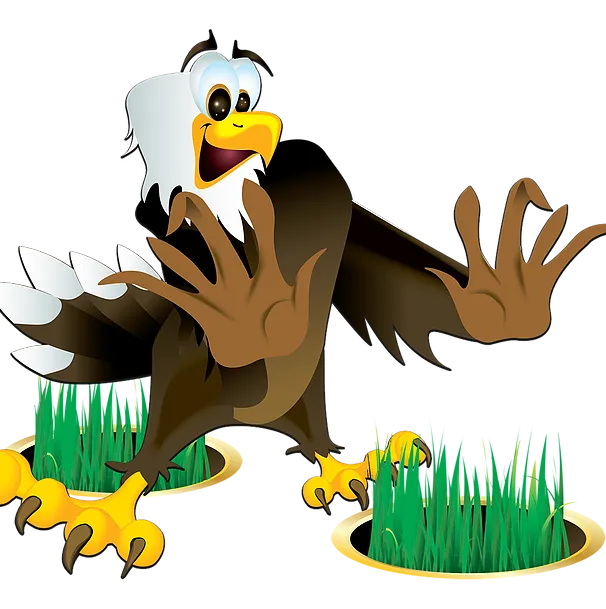Protect Your Lawn from Chinch Bugs with Eagle Lawn Care and Pest Control
Not all lawn damage starts at the surface. If your grass is turning brown or patchy, the cause may be lurking below. One of the most common culprits in Florida lawns is the southern chinch bug. These tiny pests feed on grass roots, destroying turf one section at a time. At Eagle Lawn Care and Pest Control, we specialize in identifying and eliminating chinch bug infestations—and preventing them from returning.
What Are Chinch Bugs?
Adult chinch bugs are about 1/5 inch long, black with white wings that fold across their backs. In Florida’s warm climate, these pests are active nearly year-round. Females can lay over 500 eggs during the season, depositing them in grass sheaths and crevices where they remain protected. Within 4–6 weeks, these eggs hatch into nymphs that rapidly develop into damaging adults.
Nymphs begin life yellow, then turn red with a pale band across the abdomen. They feed by inserting their beak-like mouths into grass blades—especially St. Augustine—and suck out the juices. As they feed, they release a toxin that turns grass yellow or brown and ultimately causes it to die off, creating unsightly patches across your lawn.
Why St. Augustine Grass Is Especially Vulnerable
St. Augustine is one of the most popular turf types in Florida due to its heat and drought tolerance. Unfortunately, it’s also the preferred target for southern chinch bugs. These pests thrive in hot, sunny areas—making Florida lawns a prime feeding ground. Damage often begins near sidewalks, driveways, or curbs where the heat intensifies chinch bug activity.
Because they can fly, chinch bugs can migrate from neighboring yards and spread quickly. That’s why it’s important to treat them early and effectively.
How to Spot a Chinch Bug Infestation
There are simple ways to test your lawn for chinch bugs. One method is to scuff your foot through suspicious brown patches and watch for small bugs scurrying over your shoe. For a more accurate test, try the “coffee can method”:
1
Cut both ends off a metal coffee can.
2
Press one end into the soil near the edge of a brown patch (not directly in the dead zone).
3
Fill the can with water.
4
Wait 5–6 minutes and look for bugs floating to the top.
If you see a dozen or more, it’s time to take action.
Why Professional Treatment Matters
Chinch bugs have built up strong resistance to many common insecticides, even legacy treatments like DDT. That’s why it’s essential to use targeted strategies from trained professionals. At Eagle Lawn Care and Pest Control, we combine granular and liquid treatments, customized for your lawn, to stop the infestation at its source.
Plus, we address contributing factors like thatch buildup and poor soil health—creating an environment that supports healthy grass and reduces chinch bug survival. We also recommend best practices for lawn care, such as:
- Letting grass reach full height before mowing
- Avoiding removal of more than 1/3 of the leaf blade at a time
- Maintaining consistent moisture levels
Quick Response, Expert Service
If you notice yellow or brown spots in your lawn, don’t wait. Early detection is key. We can dispatch a team to inspect and treat your lawn—usually within
48 hours of your call.
With nine full-service crews operating across the Pinellas County Florida area, we bring fast, expert help to homeowners who care about keeping their lawn lush and pest-free.
Your Trusted Local Lawn Care Specialists
Chinch bugs can be a nightmare for Florida homeowners, but you don’t have to deal with them alone. With decades of experience in pest management and lawn care, Eagle Lawn Care and Pest Control knows how to get the job done right—the first time.
Call us today at 727-953-8180 for a free lawn evaluation or to schedule a treatment.
Serving All of Pinellas County, Florida
Eagle Lawn and Pest Control proudly serves homeowners and businesses throughout Pinellas County, FL, with expert pest and lawn treatment services. Whether you're dealing with chinch bugs, webworms, or fire ants, our team is ready to help protect your turf from infestation and long-term damage.
We proudly provide Brown Patch control and lawn care services to:
- Clearwater
- Largo
- St. Petersburg
- Dunedin
- Seminole
- Palm Harbor
- Gulfport
- Tarpon Springs
- Indian Rocks Beach
- Safety Harbor
- And all 24 municipalities across Pinellas County, Florida
Whether you’re a homeowner in Belleair or manage a commercial site in Safety Harbor, our local technicians are ready to help.
Don't Wait—Contact Eagle Lawn and Pest Control Today
Brown Patch won’t go away on its own. And the longer it’s ignored, the worse—and more expensive—it gets. Our team is standing by to inspect your lawn, diagnose the issue, and start treatment fast.
📞
Call
727-953-8180 or request a free lawn analysis customized to your property.
Let
Eagle Lawn and Pest Control help you take back your turf—starting today.


